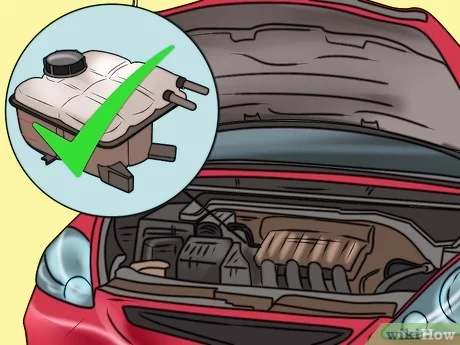- How to Cool Off a Car Engine
- 1. Park in the Shade or Cover the Engine
- 2. Turn Off the Engine and Let It Cool Down
- 3. Turn on the Heater
- 4. Use a Fan or Water Spray
- 5. Check the Coolant Level and Add Coolant if Necessary
- 6. Check the Thermostat
- 7. Check the Water Pump
- 8. Call a Mechanic if the Problem Persists
How to Cool Off a Car Engine
1. Park in the Shade or Cover the Engine
One of the simplest ways to cool down a car engine is to park in the shade or cover the engine with a reflective cover. This will help to block out the sun’s heat and prevent the engine from absorbing more heat than necessary.
2. Turn Off the Engine and Let It Cool Down
If you can safely do so, turn off the engine and let it cool down for at least 30 minutes. This will give the engine time to dissipate its heat and cool down.
3. Turn on the Heater
This may seem counterintuitive, but turning on the heater can actually help to cool down the engine. The heater uses the engine’s cooling system to circulate hot air throughout the car, which helps to transfer heat away from the engine.
4. Use a Fan or Water Spray
You can also use a fan or water spray to help cool down the engine. Be careful not to spray water directly on the engine, as this could damage the electrical components. Instead, spray the water around the engine compartment or use a fan to circulate air around the engine.
5. Check the Coolant Level and Add Coolant if Necessary
Make sure that the coolant level is at the correct level. If the coolant level is low, add coolant to the reservoir. The coolant helps to transfer heat away from the engine and prevent it from overheating.
6. Check the Thermostat
The thermostat is a device that regulates the flow of coolant through the engine. If the thermostat is malfunctioning, it can cause the engine to overheat. To check the thermostat, start the engine and let it idle for a few minutes. Then, feel the upper and lower radiator hoses. The upper hose should be hot, while the lower hose should be cool. If the upper hose is cool and the lower hose is hot, the thermostat may be stuck closed and need to be replaced.
7. Check the Water Pump
The water pump circulates coolant through the engine. If the water pump is malfunctioning, it can cause the engine to overheat. To check the water pump, start the engine and let it idle for a few minutes. Then, feel the water pump housing. The water pump housing should be vibrating slightly. If the water pump housing is not vibrating, the water pump may be malfunctioning and need to be replaced.
8. Call a Mechanic if the Problem Persists
If you have tried all of the above steps and the engine is still overheating, it is important to call a mechanic. There may be a more serious problem that needs to be addressed.





